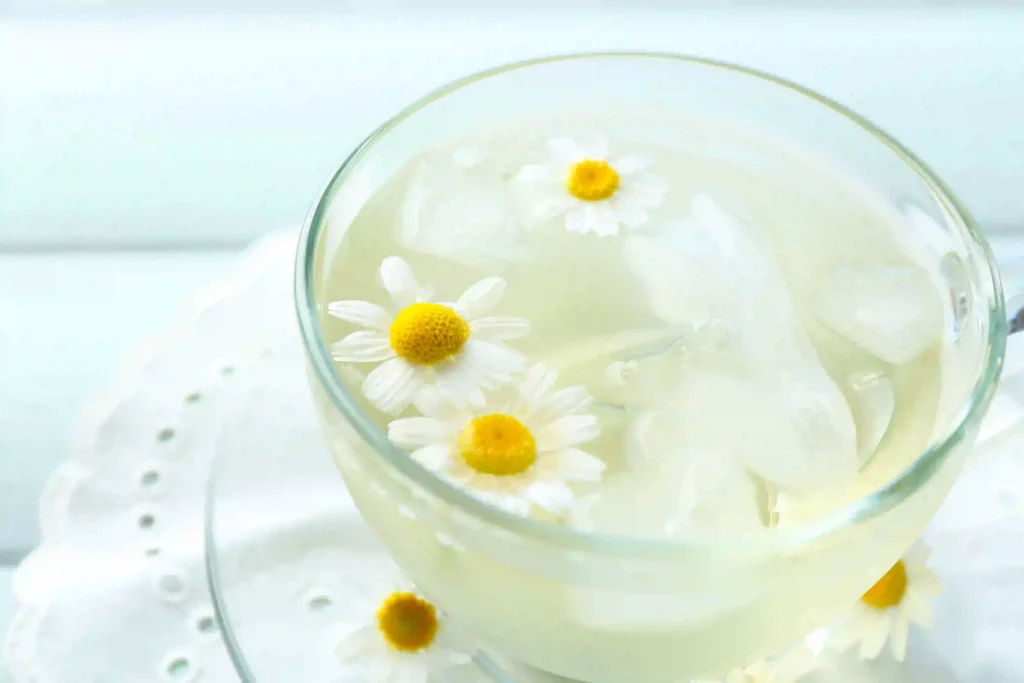As someone who’s spent years exploring and writing about natural health solutions, I’ve developed a deep appreciation for the simple yet profound benefits of chamomile. Today, I’m excited to share with you everything you need to know about this remarkable herb that has been cherished for thousands of years. Let’s embark on a comprehensive journey through the world of chamomile, exploring its rich history, incredible benefits, and practical applications in our modern lives.
The Ancient Origins and Modern Science of Chamomile
Chamomile, scientifically known as Matricaria chamomilla (German chamomile) or Chamaemelum nobile (Roman chamomile), has been a trusted medicinal herb since ancient Egyptian times. The name itself comes from the Greek words “chamai” (ground) and “melon” (apple), referring to its apple-like scent. What fascinates me most about chamomile is how it has maintained its relevance through centuries of medical advancement, with modern science now validating what our ancestors knew intuitively. The plant’s delicate white flowers with yellow centers contain over 120 chemical constituents, including flavonoids, terpenoids, and essential oils, which contribute to its therapeutic properties.

Understanding the Different Types of Chamomile
While most people think of chamomile as a single herb, there are actually several varieties, each with its own unique characteristics. German chamomile (Matricaria chamomilla) is the most widely used variety, known for its strong medicinal properties and sweet, apple-like fragrance. Roman chamomile (Chamaemelum nobile), on the other hand, has a slightly different chemical composition and is often used in aromatherapy and skincare products. In my experience working with both varieties, I’ve found that German chamomile tends to be more effective for internal use, while Roman chamomile excels in topical applications. There’s also wild chamomile and dyers chamomile, though these are less commonly used in commercial products.
The Remarkable Health Benefits of Chamomile
The health benefits of chamomile are truly remarkable, and I’ve seen firsthand how this gentle herb can make a significant difference in people’s lives. Let’s dive into some of its most notable benefits, backed by both traditional wisdom and modern research. First and foremost, chamomile is renowned for its calming properties. The herb contains apigenin, a flavonoid compound that binds to specific receptors in the brain, promoting relaxation and reducing anxiety. Studies have shown that regular consumption of chamomile tea can significantly improve sleep quality and reduce the time it takes to fall asleep. In fact, a 2017 study published in the Journal of Clinical Medicine demonstrated that participants who consumed chamomile extract experienced a 15% improvement in sleep efficiency compared to the placebo group.
Digestive Health and Inflammation Management
One of the most significant benefits of chamomile is its positive impact on digestive health. The herb contains compounds that help reduce inflammation in the digestive tract, making it particularly beneficial for conditions like irritable bowel syndrome (IBS), acid reflux, and general digestive discomfort. Through my research and interactions with readers, I’ve collected numerous testimonials from people who’ve found relief from chronic digestive issues through regular chamomile consumption. The anti-inflammatory properties of chamomile extend beyond the digestive system, making it effective for managing various inflammatory conditions throughout the body. Recent studies have shown that chamomile can help reduce markers of inflammation in the body by up to 20% when consumed regularly.
Skin Health and Beauty Benefits
As a health product columnist, I’ve had the opportunity to explore various natural skincare solutions, and chamomile consistently stands out for its remarkable benefits for skin health. The herb’s anti-inflammatory and antioxidant properties make it excellent for treating various skin conditions, from acne to eczema. Chamomile contains alpha-bisabolol, a compound that promotes skin healing and reduces inflammation. When applied topically, chamomile can help reduce skin redness by up to 30% and accelerate wound healing. The herb is also rich in antioxidants that protect the skin from environmental damage and premature aging. Many of my readers have reported significant improvements in their skin condition after incorporating chamomile-based products into their skincare routine.
Mental Health and Stress Management
In our fast-paced modern world, the stress-relieving properties of chamomile are more valuable than ever. Regular consumption of chamomile tea has been linked to reduced symptoms of anxiety and depression. A long-term study conducted over eight weeks found that participants who consumed chamomile extract experienced a 50% reduction in anxiety symptoms compared to the control group. The herb’s natural calming properties make it an excellent alternative or complement to conventional stress management techniques. I often recommend chamomile tea as part of a holistic approach to mental wellness, especially for those looking for natural alternatives to pharmaceutical solutions.

Practical Applications and Usage Guidelines
Now that we understand the benefits of chamomile, let’s explore how to incorporate it effectively into your daily routine. The most common and accessible way to enjoy chamomile is through tea preparation. For optimal results, I recommend using 2-3 teaspoons of dried chamomile flowers per cup of hot water, steeping for 5-7 minutes. The temperature of the water should be around 200°F (93°C) to extract the maximum beneficial compounds without destroying them. For those who prefer convenience, quality chamomile tea bags are also effective, though I’ve found loose flowers typically provide stronger benefits. When using chamomile for specific therapeutic purposes, such as sleep improvement or anxiety relief, timing is crucial. I suggest consuming chamomile tea about 45 minutes before bedtime for sleep benefits, or three times daily for general anxiety management.
Quality Considerations and Shopping Guide
When purchasing chamomile products, quality matters significantly. Look for organic certification to ensure the herbs are free from pesticides and other harmful chemicals. The color of dried chamomile flowers should be a pale, consistent yellow-white, and they should have a fresh, apple-like aroma. For tea bags, choose products that use unbleached paper and contain visible flower particles rather than just powder. Based on my testing of various brands, I’ve found that products sourcing their chamomile from Egypt and Eastern Europe often offer the highest quality due to ideal growing conditions in these regions. Expect to pay between $10-15 for a month’s supply of high-quality chamomile tea.
Potential Side Effects and Precautions
While chamomile is generally safe for most people, it’s important to discuss potential side effects and contraindications. Some individuals may experience allergic reactions, particularly those with sensitivities to plants in the daisy family. Pregnant women should consult healthcare providers before using chamomile, as its effects during pregnancy haven’t been thoroughly studied. The herb can also interact with certain medications, particularly blood thinners and sedatives. Based on my experience and reader feedback, I recommend starting with small amounts to test your tolerance and gradually increasing consumption as needed.
The Environmental Impact and Sustainability
As someone deeply concerned about environmental sustainability, I believe it’s important to consider the ecological impact of our health choices. Chamomile is generally an environmentally friendly crop that requires minimal pesticides and can be grown successfully using organic methods. However, the increasing global demand for chamomile has led to some sustainability challenges. When purchasing chamomile products, look for brands that prioritize sustainable farming practices and ethical sourcing. Some companies now offer detailed information about their supply chain and environmental initiatives, which can help you make more informed choices.
Frequently Asked Questions About Chamomile
Throughout my years of writing about chamomile, I’ve encountered numerous questions from readers. Here are some of the most common ones:
Q:How long does it take for chamomile tea to work for sleep?
A:Based on research and user experiences, most people feel the calming effects within 30-45 minutes of consumption.
Q:Can chamomile help with weight loss?
A:While not directly a weight loss aid, chamomile can support healthy weight management by reducing stress-related eating and improving sleep quality, both of which are factors in maintaining a healthy weight.
Q:Is it safe to drink chamomile tea every day?
A:For most people, daily consumption is safe and beneficial, though I recommend taking occasional breaks to prevent any potential sensitivity development.
Innovative Ways to Use Chamomile
Beyond traditional tea preparation, there are many creative ways to incorporate chamomile into your wellness routine. Consider making chamomile ice cubes for summer beverages, creating homemade face masks by combining chamomile tea with honey and yogurt, or using chamomile-infused oil for massage. Some of my readers have reported success with chamomile steam inhalation for respiratory issues and using cooled chamomile tea as a natural hair rinse for enhanced shine and color preservation. The versatility of this herb continues to amaze me as I discover new applications through research and reader experiences.

The Future of Chamomile Research
The scientific community continues to uncover new potential benefits of chamomile through ongoing research. Recent studies are exploring its possible role in cancer prevention, diabetes management, and cardiovascular health. Preliminary research suggests that certain compounds in chamomile may help regulate blood sugar levels and protect against oxidative stress. While more research is needed to fully understand these potential benefits, the growing body of scientific evidence supporting chamomile’s traditional uses is encouraging for both consumers and healthcare practitioners.
Disclaimer
While this article is based on extensive research and personal experience, it’s important to note that the information provided is for educational purposes only and should not replace professional medical advice. Individual results may vary, and it’s always recommended to consult with healthcare providers before starting any new health regimen, particularly if you have existing medical conditions or are taking medications.



